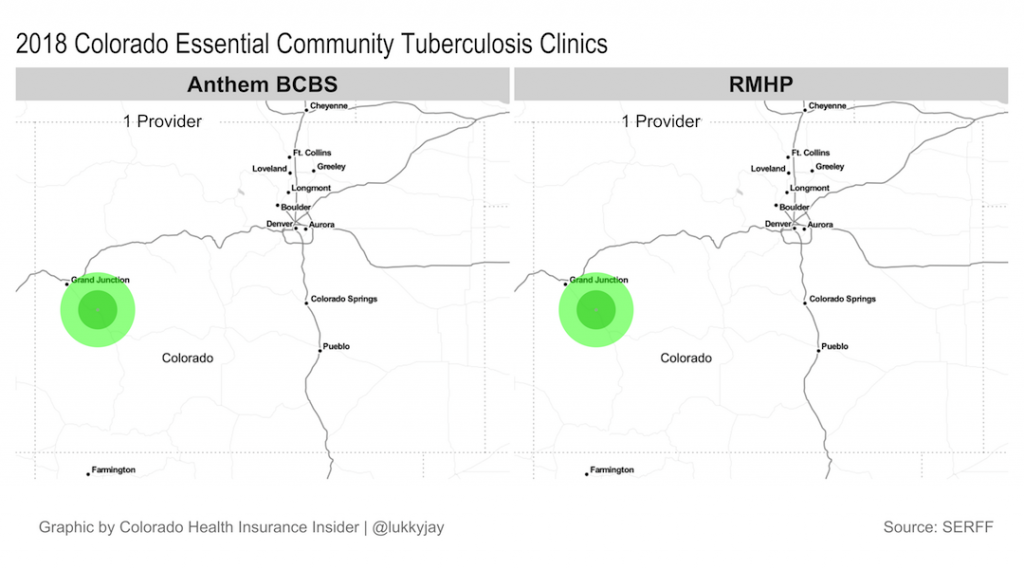Network coverage is an important part of picking a health insurance policy. And while the insurers and the exchange have tools that will let you check to see if your doctor is in-network with the plan you’re considering, those tools aren’t as helpful if you don’t have a specific provider in mind and just want to see what availability looks like in your area for a specific category of care.
To make it easier to see provider network density in different areas of the state for each of the individual market insurers, I used each insurer’s network data (from SERFF) [1] to make maps of their coverage area. For this particular project, I limited it to just essential community providers (ECPs), which predominately provide care for low-income, medically underserved individuals.
See the maps for all non-ECP specialists in the Colorado individual health insurance market here.
Colorado has about 265 ECPs. Plans sold in the exchange are required to contract with at least 30 percent of the ECPs in their service area, but network inclusion varies considerably from one area to another and from one insurer to another, and some types of ECPs are more heavily represented in insurers’ networks than others.
What is an Essential Community Provider (ECP)?
Issuers that offer plans on the Health Insurance Marketplaces (sometimes called Exchanges) now have a requirement under the Affordable Care Act to include in their network a sufficient number and geographic distribution of providers that serve predominately low-income, medically underserved individuals (referred to as Essential Community Providers (ECPs). [2]
The maps below show network density for each insurer in the Colorado individual health insurance market, for the various categories of medical ECPs.



